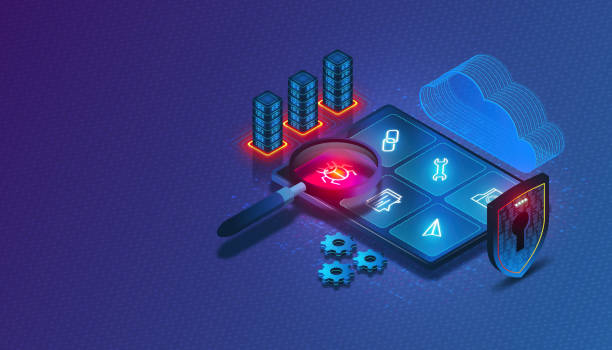How BackBox Validates Vulnerability Data That’s Relevant to You

The odds of your network and security devices being disrupted by breaches are increasing. Threat actors exploit known vulnerabilities in devices such as firewalls and routers because they are prime targets for data gathering and cyber espionage, where bad actors can sit undetected for extended periods. And since 25% of network vulnerabilities remain unpatched for over one year, they have ample time to plan and execute their attack.
While most organizations have a vulnerability scanning program in place, remediation is primarily focused on endpoint and cloud vulnerabilities. Network infrastructure remediation can be overlooked due to the time and effort required to remediate. Enterprise organizations often have a patch management tool to remediate server and workstation vulnerabilities, but they often have manual processes to remediate network-based devices.
In a recent conversation with a CISO, he stated that they often accept the risk of leaving network device vulnerabilities unmitigated because the effort required to remediate them outweighs the risk of exploitation. While historically this may have been true, the vulnerability risk on network-based devices is steadily increasing.
One such example is a state-sponsored threat actor exploiting a zero-day vulnerability (CVE-2025-20333) in Cisco ASA 5500-X series devices to deploy advanced malware, execute commands, and exfiltrate sensitive data. A successful attack allows command execution, data exfiltration, defense evasion, and access bypass.
All this to say that now more than ever, it is becoming critical for cybersecurity and network teams to collaborate to remediate risk on network-based devices. To do that, the network infrastructure teams need an easy way to digest the vulnerability reports, prioritize what to remediate, and execute remediation actions in a timely manner.
A robust capability that only BackBox offers is vulnerability intelligence for network-based devices. This includes discovering and matching known vulnerabilities to your inventory of network and security devices, prioritizing them based on the risk of exploitability, and providing options to automate updates or mitigate the risk through configuration workarounds.
We are often asked how we identify vulnerabilities or CVEs that are relevant to our customers’ networks. This blog explains the checks and balances we have implemented to provide timely, vendor-agnostic vulnerability information relevant to your environment.
Step 1: Correlating and Normalizing Vulnerability Data
The industry has three primary trusted sources for CVE information, including:
- The National Vulnerability Database (NVD), maintained by the National Institute of Standards and Technology (NIST), assigns the official CVE number for each vulnerability and maintains a repository enriched with context to provide additional information on severity for scoring purposes.
- The Cybersecurity and Infrastructure Security Agency (CISA) maintains a catalog of vulnerabilities, the CISA Known Exploited Vulnerabilities (KEV) catalog, known to be exploited in the wild, to help organizations prioritize CVEs based on active exploits.
- Device vendors issue advisories that include details about the vulnerability, affected device versions, the impact, workarounds, and patches or updates when available. However, it’s important to note that there are no CVE reporting standards or requirements that vendors must meet. Therefore, the quality, timeliness, and availability of this information vary by vendor.
To ensure the accuracy of the data we provide to customers, we leverage AI to compile the latest CVE information from trusted sources. We focus on the network and security devices our customers use. Because we are vendor-agnostic, this includes monitoring vendor advisories from over 180 vendors. Having all this data in a single pane of glass allows network infrastructure teams to quickly prioritize their remediation efforts.
Step 2: Keeping the Data up to Date
We also continuously monitor updates released from these sources and incorporate them into the BackBox platform. Algorithms that evaluate, analyze, and combine structured and semi-structured data sources take some time to do their work. However, you can expect changes released to be reflected within hours in the BackBox platform once they become publicly available.
Imagine having to do the initial compilation and ongoing maintenance work manually. It can be very time consuming and resource intensive, especially when you are supporting multiple devices and device types. It’s like trying to use the internet in the early days before Google. Any time you wanted the latest information on a topic, you would have to remember where you got that information, go back to the website, and see if there were any valuable updates.
With BackBox, our AI-enabled capabilities quickly compile and add the vulnerability data into the platform. You don’t have to think about where to get the data or remember to check for updates regularly. You know where the data comes from, and it is normalized so that you can take quick action. The data is available through dashboards in the BackBox platform and can be accessed with just a few clicks, saving you time and resources.
Step 3: Mapping to Your Existing Environment
An additional measure we take to ensure the validity of the data for your network environment is that we map it to your device inventory.
During the customer onboarding process, we work with you to create an inventory of all your network and security devices. Your device inventory is updated every time a backup is completed, leveraging existing processes without the need for a separate vulnerability scan. Inventory information includes the device manufacturer, type, model number, and firmware and software version.
Back to the challenges of doing this manually, if you’ve updated or added a new device, you don’t have to remember to check for CVE data on the latest device and version. The CVE data we present to you has already been cross-referenced against your current inventory data and automatically updated to include vulnerability data that reflects the changes in your inventory.
Trust is Earned
We take pride in the fact that over 500 enterprises worldwide trust BackBox as their preferred cyber resilience platform for network devices. We recognize that trust is earned. That’s why we have implemented a series of checks and balances to validate device vulnerability data and ensure it is relevant to you. Compiling and maintaining it for you in a way you can trust allows you to stay on top of vulnerabilities with a few clicks, automate mitigation, and have confidence in your ability to build resilience to disruptions.
Discover the advantages of BackBox today. Schedule a 30-minute demo for an interactive tour of the BackBox platform.


